Equipment
Titleist FittingWorks Access to True Tour Fitting

 Imagine traveling 180-200 days a year, working at close to 180 different events for almost 22 years. Meet Glenn Mahler, Titleist Advanced Fitting Specialist.
Imagine traveling 180-200 days a year, working at close to 180 different events for almost 22 years. Meet Glenn Mahler, Titleist Advanced Fitting Specialist.
Once a teaching professional he has done fittings for Cobra before his current position fitting on the Titleist FittingWorks Van in
How many vans are there out there now? Is it just you and Pete Bezuk?
How does FittingWorks fit in with the Titleist Perfromance Institute experience? Is there a charge?
"TPI is the next step up but FittingWorks is still a rare opportunity for individuals to experience Tour level fitting. "We believe that the golf professionals should charge for their time for a fitting just like they charge for their time for a lesson. We do charge the facilities to bring our trailer on site, but it’s up to each facility to allocate these charges however appropriately they see fit and to dictate the pricing. We certainly don’t tell them how to price our services and we need to charge because of the level of expertise and all the technology we’re bringing plus our Mobile Workshop. It would also be a disservice, to the Golf Professional, if we came to their facility with everything we bring, and you saw how expansive that is, and did that for no charge. It would be very difficult for a golf professional to charge for their time if we didn’t even charge for ours."
"The availability, technology, and resources available on the van is unbelievable. All we’re trying to do is add a level of service. Just like you mentioned TPI, that’s something Titleist accounts can avail themselves to. This is another level of service we add above their own fitting carts and own local fitting experiences that we bring to their membership or customers. It’s not for everybody, but certainly our schedule is quite full and it seems to be the players we fit keep demanding it. So we’ve got to think we’re hitting up on the right chord. The need is there and the expertise is being appreciated."
The Titleist Approach to Fitting
How much do you depend on Technology and Cameras?
Glenn points out that mere accumulation of a launch monitor data, "does not a fitter make". One must interpret that data and use it to formulate the best plans in order to improve those numbers. In fact, he’s seen so many players and shots that he usually knows what the launch monitor will say before the data is even gathered. Basically, the monitor is there for the player and not the fitter since a fitter that has seen thousands of shots and will already know what the monitor will say.
"Regardless of a player’s handicap, I think fitters can blend technology and experience and can observe flight, record flight on launch monitors, cameras, and things like that, can use that information to then formulate a plan for the player.
Is it any easier to fit a Tour player vs a Weekend Warrior?
I don’t know that it’s any easier to fit a Tour player. I think any fitter can improve any player at any level" says Glenn. When someone goes for a fitting they should not expect to be taught anything about their swing. Glenn points out that,
"We’re not there to be their instructors. Most typically we’re at a facility that one day so we’re not really able to teach them and we’re not there as their instructor. What we can tell them is what the golf club is doing or what the golf ball is doing in flight or in the dynamics of when they swing. We can tell them what we believe to be these windows or ranges of what we like to see the golf club or golf ball do, for example in launch angle, spin rate, or dispersion, or path. The first thing that happens is an assessment of what is currently in the player’s bag."
"I like to see what a golfer does with their golf clubs. A lot of times you’ll see players are misfitted for length for example. I like to see what they do when they address the ball with their posture in their current set. Our philosophy is dynamic fitting – players swings and ball flights as opposed to static fitting where you take certain measurements and by these measurements you decide you need certain lie, or certain loft, or certain length. What dynamic fitting does is it takes into account what players do with their posture and their swing. I like to see what players do with their current set because if I do start making alterations I also want to see how much their swing is changing not by me asking them to make a change but by changing a specification in a golf club."
How do you go about fitting Players into Products?
"We have these four new iron models that have just been released this march – the ZM, ZB, AP1, and AP2. What I’ll do is I’ll go through that family and describe in detail the benefits and features of each model and what the engineers designed that model to do and also to tell them what we didn’t engineer that golf club to do. At that point we’ll allow the player to hit any and all of the models. We certainly do not direct players into a model. We let the player choose the model because looks and feel are certainly very important. But, we do want to make sure the player understands what the model was designed for because you’ll have your best opportunity as a player to succeed when you have this partnership or marriage with engineering. If you try to reverse-engineer you typically will fail because the engineers are better at design than you and I might be at reversing it. What I mean by that is let’s say a player hits all over the map on the face – they don’t hit on a consistent part of the club face. Yet they may like the ZM model. That ZM model we do not design to be forgiving, that’s not its purpose." The ZM is actually a traditional-type blade for those who want that sort of club. As opposed to like an AP2 or an AP1."
"They may like it, but I want to make sure they understand when they mishit that center of percussion, that ball speed is going to reduce pretty substantially. I just make sure they understand what the models are for. At the end of the day we’re in the people pleasing business. We want to make sure we please players. Part of pleasing players certainly is giving recommendations and specifications on golf equipment that allows them to be better.
Glenn, you mentioned the most common fault you have found is club length? We had heard from some of our members that Pros fitted by Titleist were going shorter in terms of shaft length?
"It’s amazing then when you start testing players and you start shortening the lengths for players how their ball-turf impacts improve. The strike locations move higher in the face where the ball speed increases, the launch angles go up, and the spin rates become appropriate for that particular loft golf club. They’re able to do it on a more repetitive basis and that is the key to a good, accomplished player. Whether it is a Touring Professional or an Amateur, when I see their ball speeds, for whatever club they’re hitting, it generally doesn’t vary more than 2 miles per hour from swing to swing. That makes for a repetitive carry distance and then players know how far they will carry a golf ball."
Is it a fair statement that the 6 iron is the "Benchmark" for irons for FittingWorks?
How does that compare from the swing instruction side where most people are taught to groove a 7 iron? Do people start to really struggle now once they get past a 6 iron? What is the set makeup you are starting to see more of now considering today’s common swing faults?
Since you are shortening the shaft and taking into account loft adjustments, how do you factor in the lie angle when fitting? You are known for your saying the the "lie board can lie."
"Well, I think other than ourselves, Callaway, and TaylorMade have similar standards on lies. As you know there’s no industry standard on lies.
"The demands come mostly from the consumer side, when we see most of the orders coming in at 62.5 it makes sense for us to make that our standard as opposed to 60.5. When a club has a shorter lie angle it is generally flatter. When you talk about a standard length club, whatever that length is, you’re usually going plus or minus on lie. When you go shorter you will typically stay standard or go flat. When you go long you will generally stay standard or go up. It’s a rare case that I will fit somebody long and flat and it’s a rare case I will fit somebody short and upright. It happens this way but it doesn’t happen very often. Just like I’m sure if you went through my personal specifications on irons, I probably fit a little bit more longer than standard than shorter but not much. Most of the irons I fit are probably at standard. So I go both ways. I’m not reluctant to go short just as I’m not reluctant to go long. I just let the evidence direct me where to go. I’m always directed by the evidence at impact and the ball flight."
What about indoor fittings? How much of a difference is an Outdoor vs an Indoor Fitting?
"Personally this is where I believe experience comes in the most. The technology is very helpful too, but, I believe I could be and excellent fitter indoor or outdoors. There are some things you’re going to have to be a little bit more aware of indoors because you can’t see the ball flight. I would spend much more time interviewing the Player in a couple of areas as that would be the most important part in terms of the indoor fitting. Currently there are three areas I accumulate information. I accumulate information from a player interview where I ask them, like I did you, their handicap, the strength of their game, the weakness of their game. "
"You have the player do a little self assessment for you. I like some history of where players tend to miss, what clubs they struggle with, what clubs they’re successful with, do they do better with fairways or hybrids or vice versa. So player interviews are important. Looking at their current set of clubs is equally important because that current set of golf clubs they own is like a crime scene."
"There are clues and evidence in those clubs. What I mean is I will look at strike locations on the face. I will take measurements of length and lie, start putting them in, and developing a synopsis of their game. Players tell me they tend to miss the ball left for example. And then I start seeing how those specifications work into that. Then finally ball flight, player swings ball flies. So ultimately all three areas, player interview, current set, and ball flight should tell you the same thing."
Let’s start drilling down on the products a bit. Specifically FittingWorks and irons.
How do you approach people concerning length when shortening their Irons?
"That’s a factor – everyone always talks about length, length, length but everyone’s irons are for scoring. A 5 iron usually plays into the longest par 4 you can get into. Also when you refer to length, another way we describe it is it’s not how far it goes, "it’s more important how far it goes once it hits the green because that’s going to determine where you putt from." Not many players can control their spin off of irons. Or if they have the right spin, maybe they don’t have the correct launch rate. So it’s being able to get these blends of both spin and launch for that speed and also for the type of greens you play. Here in Northern California where you play traditionally push up greens that are poa anna from back to front, the greens here in
Do you ever get any requests for Grinds on irons because of these different playing conditions? Also any feedback from players concerning the bounce on the AP 1 or AP 2?

"It doesn’t have too much bounce – it has a little bit more sole width. So it has a little bit more camber down there than the 695s and 704s. But I don’t think its bounce has increased over either of those models. I believe the bounce is the same; it just has a little more sole width. But that tungsten nickel down there low back toward the trailing edge has really helped increase the launch and definitely helped increase the forgiveness."
FittingWorks and Drivers
We read a lot of forum topics related to which irons are best for me but, we also get a fair amount of questions in regards to which is the hottest driver and which is the best shaft for it?
"I would say in the last couple of years out of our fitting trailer we do primarily irons and wedges. It’s not that we don’t do drivers, but most players come to us for irons and wedges. That’s not something we dictate, that’s something they choose. One reason I think this is because most golf clubs, most golf shops have a lot of different demo clubs to try out. And players take them out and check them out and take them out on the course. Each player knows how far they hit the ball on their course and they’ve tried different manufacturers, different lofts, and different shafts. Over time they’ve figured out this driver doesn’t go any further than mine."
"I’ll give you an example, we were down in
What has been your experience with D1 and D2 Titleist Drivers so far? What are some factors you are looking for in optimal player performance? Have you ever seen it where numbers seen completely out of tune?
"Again, it’s a range. I’m not going to give you one number because it’s so variable. For better players who have ball speed of anywhere between 145 and 160 mph, we’re going to see launch rates in a window from 10-14 degrees and spin rates might be anywhere from 2200 – 2700."
For a time there, everyone was going lower loft. Now it seems that people have started to go higher because of spin rates and launch angles. Have you noticed this?
How has increasing the CC’s over the years effected fitting?
How does working with the Cobra Brand help you with FittingWorks?
"They make several products that are designed for better ball flights. But most of their products are designed to get the ball up and more draw bias. So it’s certainly the bulk of majority of players in golf need that type of flight. Their products are engineered to enhance those flights and that’s why they create them and why they’re so successful."
FittingWorks and Wedges
How do you fit wedges at facilities? Do you visit many facilities where you can do bunker fittings?
"Maybe
How would you assess the availability of different wedge grinds today and what FittingWorks offers?
Are you seeing grinds on 52*, 54* and 56* Wedges too?
Typically not as much because those generally aren’t clubs you open up as much. You might do a little more in a 54 or 56, but 52 is mainly a club that’s played from neutral to if anything you’re taking it down a little bit, taking the loft off at times. What I mean by taking the loft off, you’re trying to hit lower shots in and so you probably don’t do near as much in 54s and 56s as you do in 58s."
Since this is a FittingWorks Tour Van, do you do any grinding of wedges?
FittingWorks and Putters
"With our fitting trailer, we do all 13, what I call "air assault" clubs. So everything that’s up in the air, we fit. We don’t fit any putters, but we do repairs or alterations, adjust the lie and the loft of the putter should a player need to. And we’ll do things like re-grip. So we’ll re-grip their putters with a wide stock of grips from what’s available from the factory. But we can re-grip a putter, things like that."
Finally Glenn, What’s in the Bag???
I’ve got an F4, 15.5, and F4 18.5 and both those just have a YS-6 stiff and they’re both a half inch short. Actually the 3-wood is an inch short and the five wood is a half inch short.
I play AP-2 3-PW with Dynalite Gold S300, -.25
I play a Vokey 52.08, and a Vokey 56.14. I just carry three wedges. I’m old school. I don’t play very much. I don’t practice very much. I didn’t grow up playing a 60, I never really learned to hit a 60 so I’m quite accustomed to hitting high shots with a 56. I could probably do it a lot better with a 60, but I don’t have the opportunity to practice.
And I have a
*Special Thanks to Apryl DeLancey for helping me put this piece together.
- LIKE2
- LEGIT0
- WOW0
- LOL0
- IDHT0
- FLOP0
- OB0
- SHANK0
Equipment
Coolest thing for sale in the GolfWRX Classifieds (4/18/24): TaylorMade BRNR mini driver head
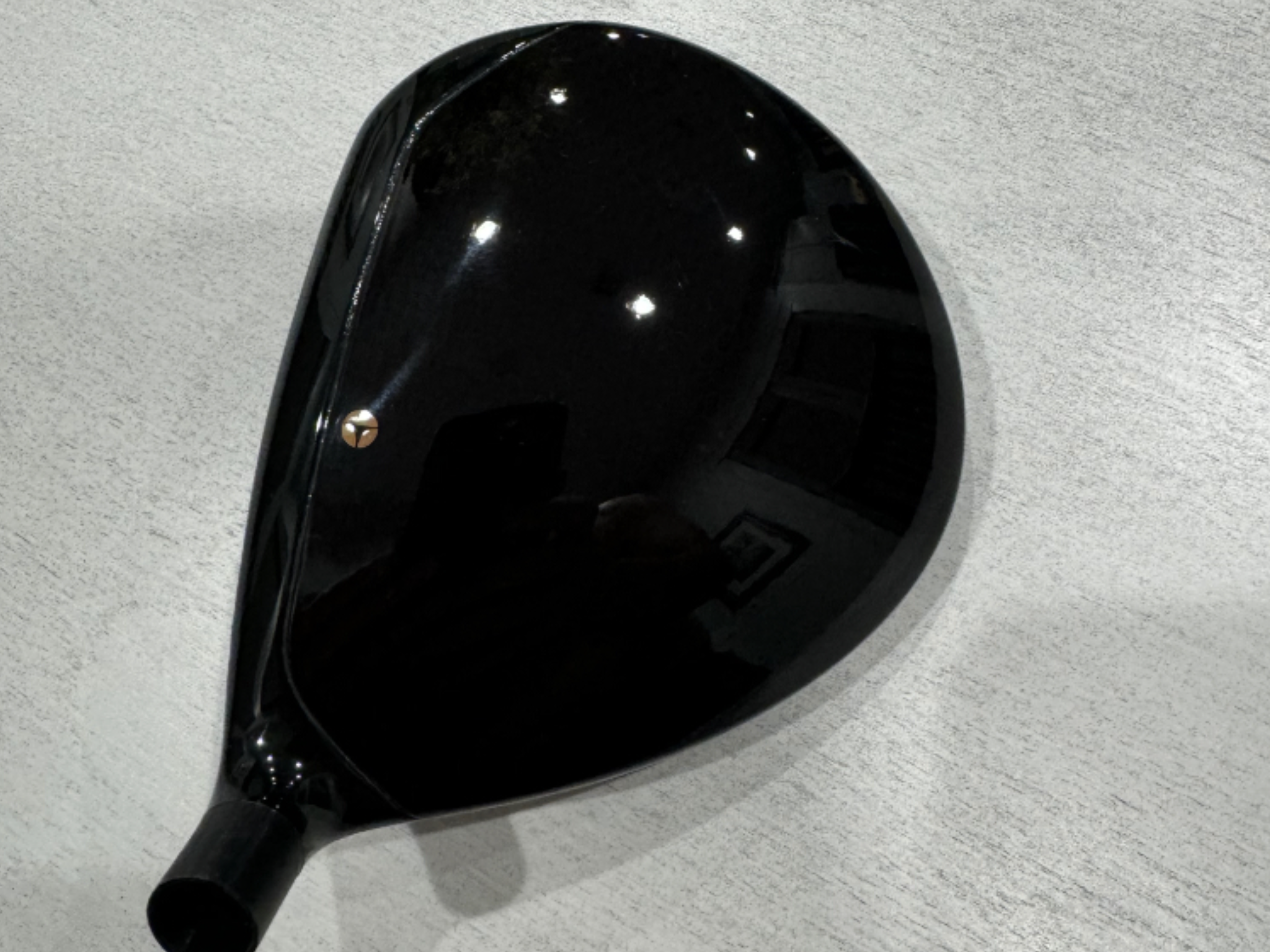
At GolfWRX, we are a community of like-minded individuals that all experience and express our enjoyment of the game in many ways.
It’s that sense of community that drives day-to-day interactions in the forums on topics that range from best driver to what marker you use to mark your ball. It even allows us to share another thing we all love – buying and selling equipment.
Currently, in our GolfWRX buy/sell/trade (BST) forum, there is a listing for a TaylorMade BRNR mini driver head
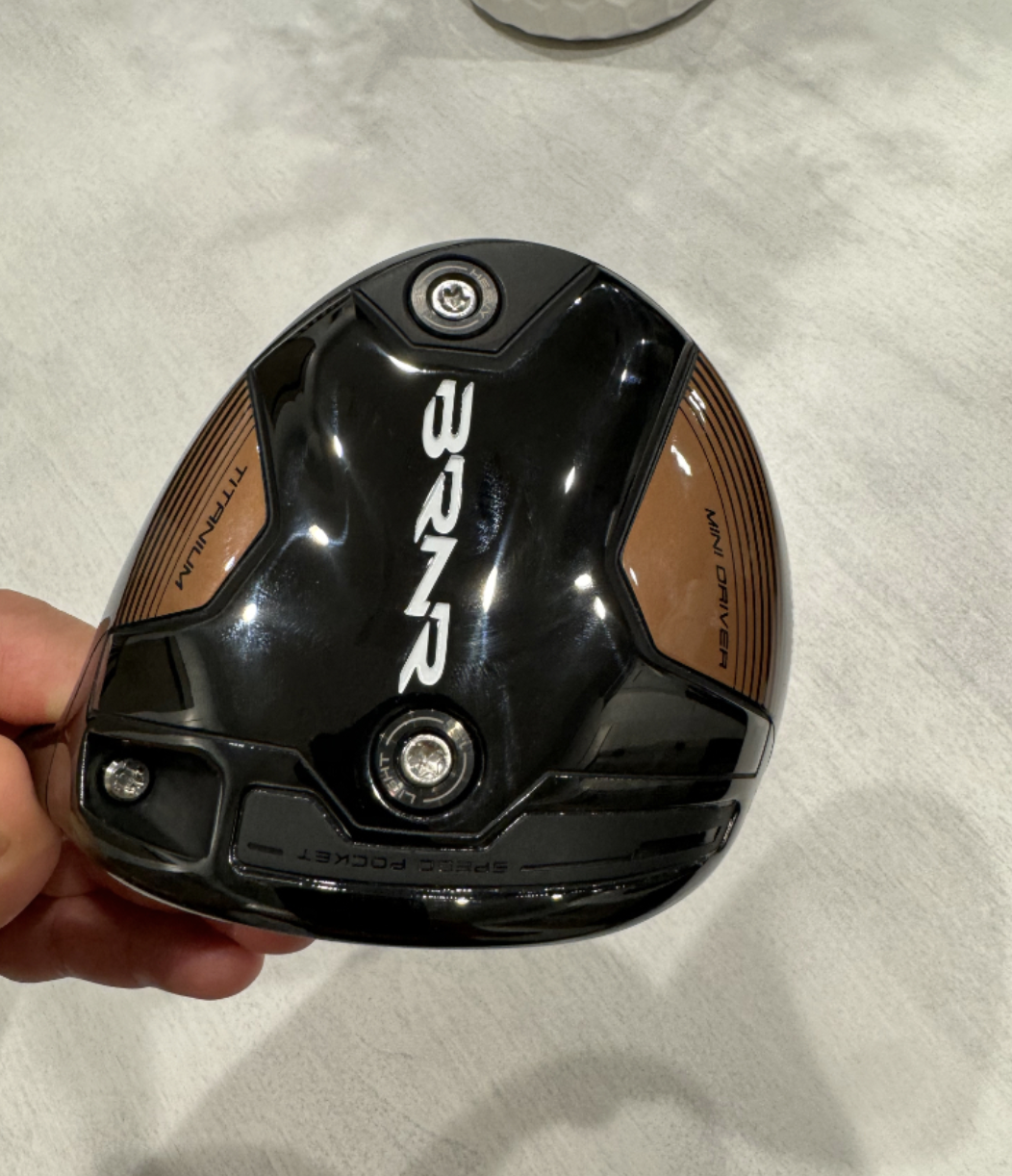
From the seller: (@lasallen): “For sale is a BRNR mini 11.5 deg head only in brand new condition. $325 shipped.”
To check out the full listing in our BST forum, head through the link: TaylorMade BRNR mini driver head
This is the most impressive current listing from the GolfWRX BST, and if you are curious about the rules to participate in the BST Forum you can check them out here: GolfWRX BST Rules
- LIKE0
- LEGIT0
- WOW0
- LOL0
- IDHT0
- FLOP0
- OB0
- SHANK0
Equipment
Coolest thing for sale in the GolfWRX Classifieds (4/18/24): Ping PLD Limited Anser – 1988 Open Championship – #2 of only 88 Made
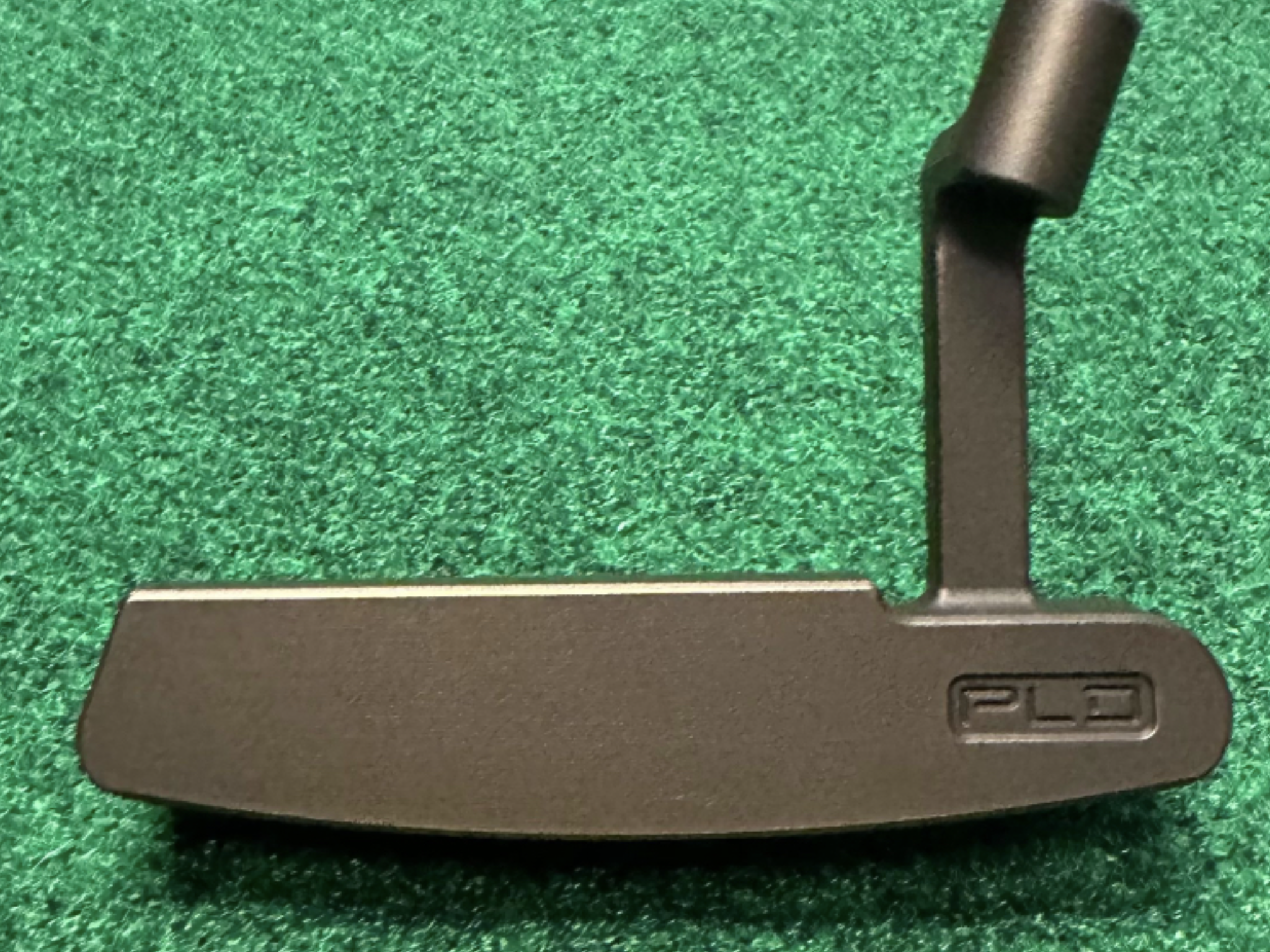
At GolfWRX, we are a community of like-minded individuals that all experience and express our enjoyment of the game in many ways.
It’s that sense of community that drives day-to-day interactions in the forums on topics that range from best driver to what marker you use to mark your ball. It even allows us to share another thing we all love – buying and selling equipment.
Currently, in our GolfWRX buy/sell/trade (BST) forum, there is a listing for a Ping PLD Limited Anser – 1988 Open Championship – #2 of only 88 Made.
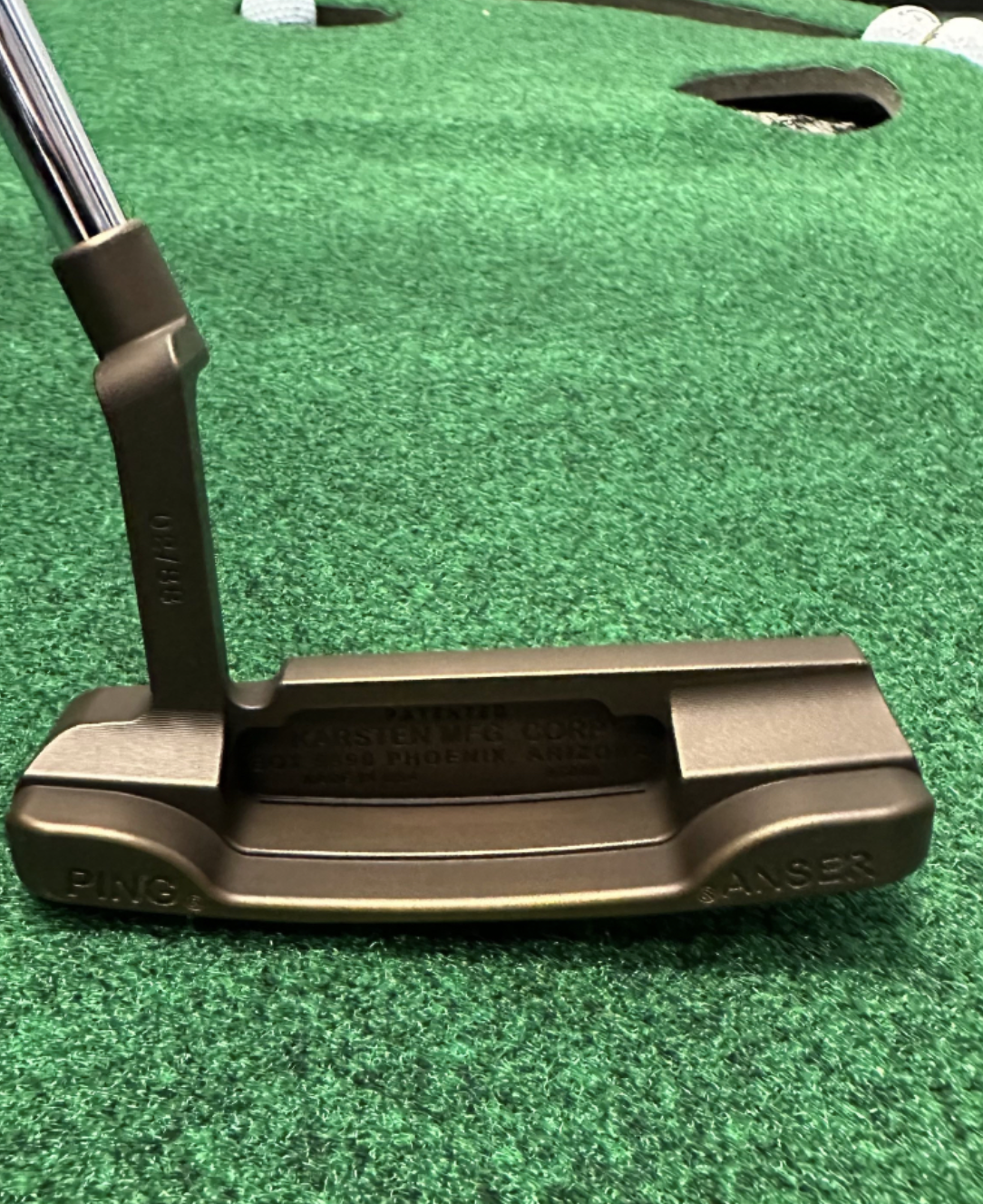
From the seller: (@DLong72): “Ping PLD Limited Anser – 1988 Open Championship – #2 of only 88 Made. ?: $1150. ?? 100% milled collectors item from the limited releases commemorating when Ping putters won every major in 1988 (88 putters made). This was the model Seve Ballesteros used to win the 1988 Open Championship. Condition is brand new, never gamed, everything is in the original packaging as it came. Putter features the iconic sound slot.
Specs/ Additional Details
-100% Milled, Aluminum/Bronze Alloy (310g)
-Original Anser Design
-PING PP58 Grip
-Putter is built to standard specs.”
To check out the full listing in our BST forum, head through the link: Ping PLD Limited Anser – 1988 Open Championship – #2 of only 88 Made
This is the most impressive current listing from the GolfWRX BST, and if you are curious about the rules to participate in the BST Forum you can check them out here: GolfWRX BST Rules
- LIKE1
- LEGIT0
- WOW0
- LOL0
- IDHT0
- FLOP0
- OB0
- SHANK0
Equipment
Inside Collin Morikawa’s recent golf ball, driver, 3-wood, and “Proto” iron changes
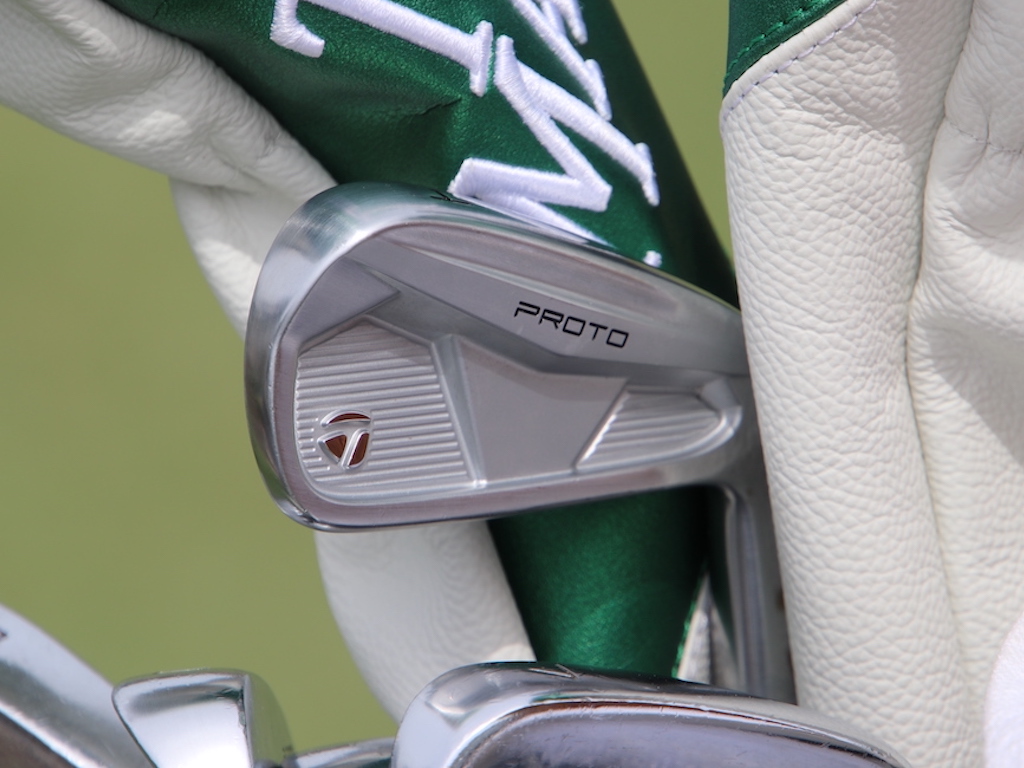
As you probably know by now, Collin Morikawa switched putters after the first round of The Masters, and he ultimately went on to finish T3.
The putter was far from the only change he made last week, however, and his bag is continuing to change this week at the 2024 RBC Heritage.
On the range of The Masters, Morikawa worked closely with Adrian Reitveld, TaylorMade’s Senior Manager of Tour at TaylorMade, to find the perfect driver and 3-wood setups.
Morikawa started off 2024 by switching into TaylorMade’s Qi10 Max driver, but since went back to his faithful TaylorMade SIM – yes, the original SIM from 2020. Somehow, some way, it seems Morikawa always ends up back in that driver, which he used to win the 2020 PGA Championship, and the 2021 Open Championship.
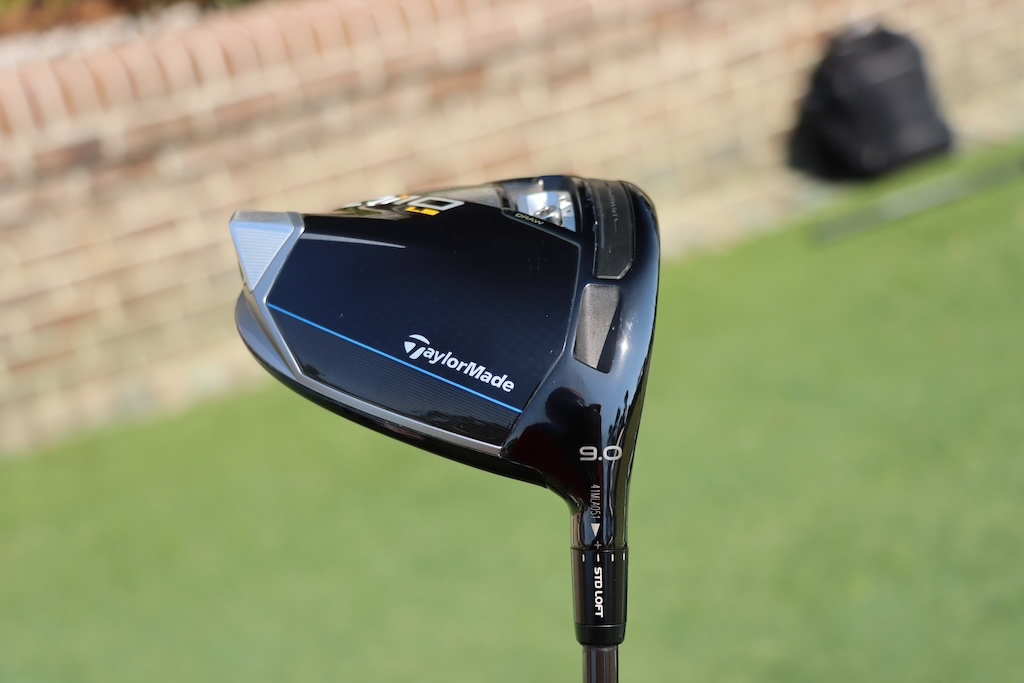
At The Masters, however, Rietveld said the duo found the driver head that allowed “zero compromise” on Morikawa’s preferred fade flight and spin. To match his preferences, they landed on a TaylorMade Qi10 LS 9-degree head, and the lie angle is a touch flatter than his former SIM.
“It’s faster than his gamer, and I think what we found is it fits his desired shot shape, with zero compromise” Rietveld told GolfWRX.com on Wednesday at the RBC Heritage.
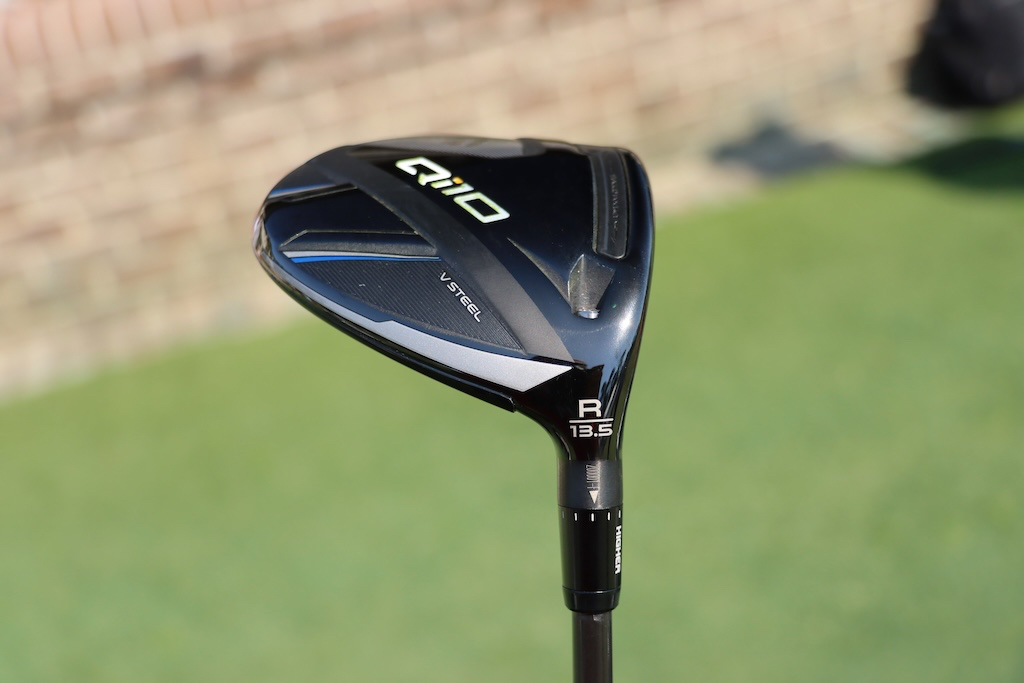
Then, to replace his former SIM rocket 3-wood, Morikawa decided to switch into the TaylorMade Qi10 core model 13.5-degree rocket head, with an adjustable hosel.
“He likes the spin characteristics of that head,” Rietveld said. “Now he’s interesting because with Collin, you can turn up at a tournament, and you look at his 3-wood, and he’s changed the setting. One day there’s more loft on it, one day there’s less loft on it. He’s that type of guy. He’s not scared to use the adjustability of the club.
“And I think he felt our titanium head didn’t spin as low as his original SIM. So we did some work with the other head, just because he liked the feel of it. It was a little high launching, so we fit him into something with less loft. It’s a naughty little piece of equipment.”

In addition to the driver and fairway wood changes, Morikawa also debuted his new “MySymbol” jersey No. 5 TP5x golf ball at The Masters. Morikawa’s choice of symbols is likely tied to his love of the Los Angeles Dodgers baseball team.
Not enough changes for you? There’s one more.

On Wednesday at the 2024 RBC Heritage, Morikawa was spotted with a new TaylorMade “Proto” 4-iron in the bag. If you recall, it’s the same model that Rory McIlroy debuted at the 2024 Valero Texas Open.
According to Morikawa, the new Proto 4-iron will replace his old P-770 hollow-bodied 4-iron.
“I used to hit my P-770 on a string, but sometimes the distance would be a little unpredictable,” Morikawa told GolfWRX.com. “This one launches a touch higher, and I feel I can predict the distance better. I know Rory replaced his P-760 with it. I’m liking it so far.”
See Morikawa’s full WITB from the 2024 RBC Heritage here.
- LIKE64
- LEGIT8
- WOW2
- LOL6
- IDHT2
- FLOP4
- OB3
- SHANK6
-

 19th Hole1 week ago
19th Hole1 week agoDave Portnoy places monstrous outright bet for the 2024 Masters
-

 19th Hole3 weeks ago
19th Hole3 weeks agoThings got heated at the Houston Open between Tony Finau and Alejandro Tosti. Here’s why
-

 19th Hole1 week ago
19th Hole1 week agoTiger Woods arrives at 2024 Masters equipped with a putter that may surprise you
-

 19th Hole2 weeks ago
19th Hole2 weeks agoReport: Tiger Woods has ‘eliminated sex’ in preparation for the 2024 Masters
-

 19th Hole5 days ago
19th Hole5 days agoTwo star names reportedly blanked Jon Rahm all week at the Masters
-

 19th Hole4 days ago
19th Hole4 days agoNeal Shipley presser ends in awkward fashion after reporter claims Tiger handed him note on 8th fairway
-

 19th Hole3 days ago
19th Hole3 days agoReport: LIV Golf identifies latest star name they hope to sign to breakaway tour
-

 19th Hole2 weeks ago
19th Hole2 weeks agoAddiction, spinal fusion, and scam artists – Everything Anthony Kim revealed in candid interview with David Feherty















Mike B
May 22, 2009 at 2:48 pm
Great article, is there a UK fitter as well qualified to work with a (6) H’Cap golfer?
I would prefer independent of any one manufacturer
mike
Mark
Jan 3, 2009 at 7:27 pm
Love the article. I wish he was in Nor Calif. Does any know where I can get a set of 909 surefit weights?
Deschi
Oct 14, 2008 at 1:59 am
It’s not a common result, but it might very well be what you need … generally that kind of result tends to appear with shorter than average people with rather short arms AND a out to in swingplane. If that is the case and you do not want to work on your swing and change it – that specc is probably correct for you
ot – dynamic fitting is the way to go if you have a student who has a settled swing and is not about to change that in the near future. less skilled golfers are very often better off with clubs that are closer to their static results since every golfer tends to adapt to his clubs … and if the clubs are the right speccs – the adaption makes your swing better 😉
Walter
Sep 30, 2008 at 4:45 pm
Great article! I was fitted for the AP1 but will put off the purchase until Jan. My worry is I was fitted for 1/2 short & 2*up and in the article, Glenn says almost all the time he sees shorter length, go negative lie and longer shaft length, go more upright, which is just opposite of my setup… But I have used the lie board and impact tape and the readings seem correct.
Any input on this?
T Porter
Sep 27, 2008 at 6:03 pm
Very interesting article..shame he doesn’t work in England
R Kohli
Sep 11, 2008 at 7:45 am
Very knowledgeable article
Gene K
Sep 4, 2008 at 3:35 am
I have been fitted by Glenn twice, once for my dirver and twice for 2 different sets of irons. I really value his input and his recs re: my clubs. Class act.
chuckd
Aug 26, 2008 at 3:50 am
Awesome read! If only they had a van close to me 🙁